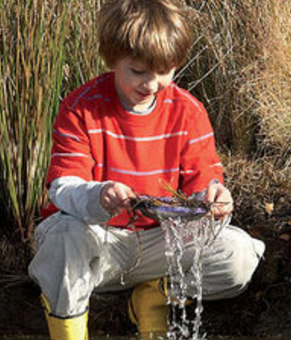PEI has developed a series of 180-hour frameworks that align to natural resource and education industry needs, K-12 standards, and dual credit with Washington State colleges and universities. Upon completion of each course, teachers provide students with a signed Document of Competency that rates their proficiency in a variety of job-related skills that have been identified by industry partners.
PEI provides teachers with teaching resources, recommended community and industry partners, and a professional learning network.
- 49% of Washington State jobs require training beyond high school.
- 92% of youth that participate in CTE programs graduate high school, vs. 86% of all students.
Frameworks Available
Each framework was written with high school teachers, industry, tribes, career and technical colleges, and the Washington Office of the Superintendent of Public Instruction (OSPI). These frameworks align with CTE standards, Next Generation Science Standards, 21st Century Skills, and the core high school credits students need to graduate. Students gain valuable hands-on learning experiences while interacting with natural resource employers.
PEI’s teacher resources and professional learning support teachers as they develop and lead each course.
Dual Credit Articulation: Dual credit offers a way for students to earn college credit while in high school and provides incentives for youth to continue their education beyond high school graduation. Dual credit articulation requires an agreement between each individual high school teacher and colleges.
PEI supports individual high schools and districts to develop articulations with career and technical colleges (CTC) and universities. When applicable, PEI has designed the following Advanced (preparatory) course frameworks to align with CTC programs in natural resources. Contact [email protected] to discuss articulation options for your courses.
Aquaculture and Fisheries (A&F)
This sequence applies scientific and mathematical principles to aquaculture and fisheries management. Units include safety, stewardship and sustainability, aquatic organism biology and ecology, water quality and animal husbandry, data science and analysis, facility and equipment operations and maintenance, communication and marketing, career pathways, and Supervised Agriculture Experience (SAE).
- Introduction to A&F Framework
- 1 explore credit (180 hrs): Lab science, CTE, or Algebra 1
- Advanced A&F Framework
- 1 preparatory credit (180 hrs): Lab science, CTE, or math at a higher level than Algebra 1
- A&F career pathway flyer
- A&F pathway infographic
Education through Outdoor Learning (EOL)
This sequence applies educational pedagogy concepts to engage students interested in careers in education. The courses focus on facilitating learning in outdoor settings and incorporating environmental education at the K-6 level. Units include building safe and inclusive learning communities, culturally sustaining pedagogies and belonging, teaching methods, planning for instruction, career pathways, and an immersive learning experience. Students participate in Washington State’s 5th or 6th grade Outdoor Schools or other outdoor/environmental education programming throughout this course.
Forest Management (FM)
This sequence applies scientific and forestry principles, as well as technical writing and communication skills, to the management of Washington’s forests. Units include safety; evaluation of forest management practices; timber cruising and valuation; diseases, insects, and pathogens; timber stand management and silviculture; fire ecology management; mapping and land measurement; forest practice law and agencies; career pathways; and SAE.
- Introduction to FM framework
- 1 explore credit (180 hrs): Lab science or CTE
- Advanced FM framework
- 1 preparatory credit (180 hrs): Lab science, CTE, or technical writing (English language arts
- FM career pathway flyer
- FM pathway infographic
Restoration Ecology (RE)
This sequence applies scientific, restoration, and social studies ecology principles to the restoration of Washington habitats. Units include safety; historical, traditional, and contemporary land management; plant identification and watershed ecology; restoration ecology management plan implementation; restoration ecology laws and agencies; career pathways; and SAE.
Urban and Community Forestry (UCF)
This sequence introduces scientific and algebraic principles of urban and community forestry to the student. Units include safety, well-being and teamwork; trees and people; plant identification and anatomy, tree health, tree planting, remote sensing and data analysis, and career pathways, and SAE.
Other resources:
“In the last 25+ years I’ve been in education, such a model as this seemed to be an inaccessible ideal. However, with PEI, the ideal has become a reality! My students will receive Biology lab credit, an incredible field experience, and networking opportunities with industry professionals.”
-John Glenn, Tumwater School District teacher
Download the Frameworks

























































